rock paper scissors

Immediately after Michigan's first drive I got an Honest Trailer's worth of requests to do the Ronnie Bell touchdown.
It wasn't that complicated—an end around that looked like Michigan's favorite power running play to the other side that caught Iowa overplaying the favorite power play. It wasn't even new, since we ran it against Hawai'i.
But it's fun to draw up big Rock/Paper/Scissors wins, and there was more going on than Schoonmaker reversing direction, so let's draw it up!
Counter
To understand why Iowa got so disoriented you have to understand the play it countered, Counter Trey.
Trey is a base power run, a bread and butter football play they were already running when Horace Prettyman was an 8th year senior and Craig Ross was still in his late 2800s. It's withstood the test of time for two key reasons:
- It makes you defend the side that didn't have numbers at the snap.
- It forces blocking encounters between non-equivalent players.
In the base example above you've got an "F" (a TE, FB, or H-back) slamming into a third linebacker, who these days is usually more like a safety. You've also got a guard slamming into an end or OLB, a type of player that's also been shrinking as defenses look to get faster and more athletic off the edge.
[After THE JUMP: Someone forgot about the counter to Trey.]
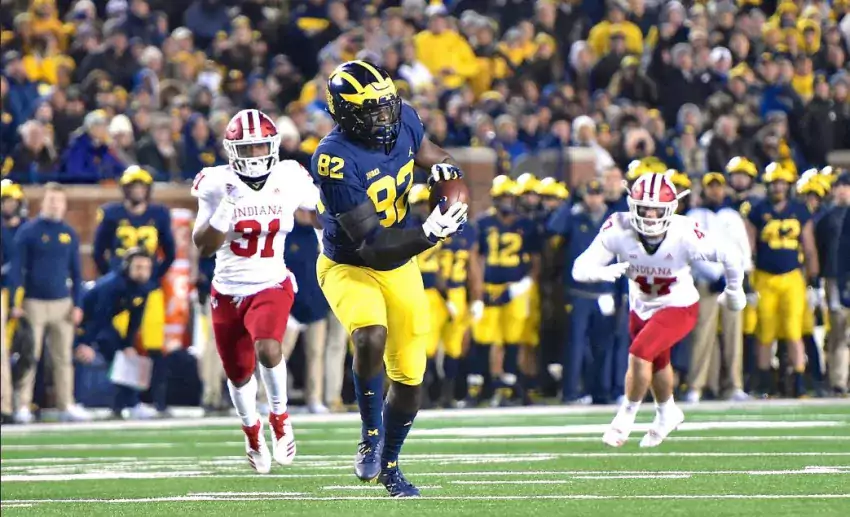
I know this game left a lot to be desired but there was one play in the IU game that went entirely to script, and also demonstrated a few things about Michigan's offense as it spurts and blorps its way toward being really good.
After all the field goals early in this game, it felt great to get an easy touchdown. It was also a route combination I've been hoping to see a lot more of from Michigan this year from their multi-TE sets. It's been a staple of Harbaugh's passing games going back at least to Stanford. And the guy who designs the playbooks for Madden noticed it immediately:
Here's a diagram of the play from a traditional I formation look. pic.twitter.com/31eKHMNHol
— Anthony White (@AWhite_73) November 17, 2018
Rock
The primary concept of Harbaugh's offense is creating more gaps. Often this means bringing somebody from the backfield to insert somewhere, whether that be a fullback, a tight end from the other side, or a lineman who pulls. The other way to do that is extend the line of scrimmage:
Against Indiana, Michigan was running a lot of early pin and pull-type plays where they loaded up with tight ends and used a pulling guard as the kickout, starting with the first play of the game, a "counter" from their trips-TE look:
And then this almost touchdown a few plays later:
Truuuuuuuuuuuuuuuuuuu
This is mansome stuff. Michigan is cracking the MLB with their best blocking tight end, blocking down on IU's weaker (normally backside) linemen with both offensive tackles, kicking out a safety on the edge with whatever Onwenu weighs times however much Onwenu is accelerating, and pulling an uncovered lineman (Ruiz) from the backside to boot.
[After the JUMP: Paper first]
This is a follow up to to Doctor Rocklove a few weeks ago, where I identified the influence of offensive sets on philosophies. If you're not familiar with offensive theory you should go back and read that. If you're a football coach you are welcome to pinch the bridge of your nose and shake your head, for this is only going to cover about 20 percent of what you know to be the basics of offensive football.
The point today is to look at some of the base plays of various offenses, and a few of the constraint plays that they use to counter, and what defenses do to counter that. In doing so I hope to find stumble upon a better explanation of Borgesian offensive theory than the "grab bag" this space has previously suggested.
That Thing You Do
You've probably read enough college football boilerplate by now to have heard a coach talk about "what we'd like to do." This does not have to mean one play, but it often means one concept—very much like a play—which the team will be able to execute to perfection against the defense they want to see. That play is usually going to be low-risk, and if executed flawlessly against the vanilla defense it's built to beat, it will gain a consistent 5 to 7 yards.  It can be run out of many formations, and you will practice it a thousand million times until you are sure it will work every time unless the opposition "cheats" to beat it.
It can be run out of many formations, and you will practice it a thousand million times until you are sure it will work every time unless the opposition "cheats" to beat it.
For Vince Lombardi it was the sweep. For Wisconsin (and virtually every high school in our division in the late-'90s) it was the ISO. It could be the Triple-Option (Bo), or the Zone Read (Rodriguez), or Hitch-n-Out (Walsh) or Levels (Peyton Manning's favorite), or 62 mesh (Captain Leachbeard). With passing offenses, which is Borges's thing, it's important to note that the core concept itself can often be a package of plays which work off of each other, none particularly favored; for running the same concept will vary where on the line it will attack.
You can go crazy for your core concept. You can practice it incessantly. You can recruit players whose skills best fit what they're supposed to do on that play. You can even focus physical training on developing muscles that are used on that play. The better you are at that play—and this is a sliding scale—the more the defense has to move someone or do something to "adjust" to you. But this is a zero-sum game, so if you're moving a defender to stop the base play, he's no longer doing the thing he was doing before. He is making something else way easier than it should be. He'll do this anyway, until you make him pay.
Constraint Theory of Offense and RPS
What you choose as your core play or concept will determine much about the other things your offense does, because now you add plays to punish defenses for adjusting to your base play. That's what coaches mean by "constraint"—you are constraining the level to which the defense can react to your bread and butter. What you are essentially doing is creating an environment in which you get to run your core play, which you've practiced more than any other play, exactly how you drew it up as much as you can.
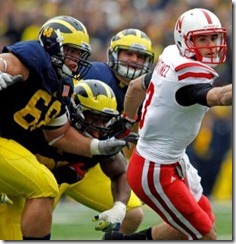 Certain concepts are almost always constraints because they won't work against vanilla defenses. Delayed handoffs work because the defensive line is closing on the quarterback as if it's a pass play. Halfback screens work well against blitzes but if a linebacker is in man on the running back, a vanilla defensive concept, you're screwed.
Certain concepts are almost always constraints because they won't work against vanilla defenses. Delayed handoffs work because the defensive line is closing on the quarterback as if it's a pass play. Halfback screens work well against blitzes but if a linebacker is in man on the running back, a vanilla defensive concept, you're screwed.
Defensive wins in rock, paper, scissors are rare and lucky guesses; usually a D's successes come from outstanding execution of a vanilla defense, for example if the nose tackle shoots past a playside block and forces a pitch on a speed option (as if that could happen).
Defenses have constraints too but theirs are limited by the offense's greatest advantage: whoever has the ball chooses the play (the D's advantage is so much more can go wrong with offensive execution). Defensive constraints translated to boilerplate sound like "we took away the run and made Denard beat us through the air." What they mean is the defense was cheating against the offense's base play all game but leaving themselves more open to the constraint plays, betting on poorer execution by the offense.
Dantonio last year sent two blitzing linebackers up the middle on many occasions, taking away Michigan's bread 'n butter play "Denard-'n-stuff." This forced Michigan into our constraint, which was targeting open receivers in short zones, but then Dantonio took this away by having safeties replace the blitzing LBs. This opened up another constraint by making deep coverage completely up to the cornerbacks, but then a trash tornado covered that constraint for them.
What the constraint theory does for playcalling is create a kind of matrix of offensive adjustments to defensive adjustments and adjustments to those adjustments. For a typical varsity high school team that matrix is probably 20 plays, and for college football it's more complex, and in the NFL the adjustments are so myriad and subtle I'd have an easier time teaching EMI/RMI shielding (it sounds hard).
Because the shades of gray in such a big decision matrix make for convoluted understanding, I've tried to (over-)condense the basic constraints of four basic offenses. There is way, way more but these are a few of the constraint packages that Michigan used last year.
Manball
Offensive Concept: I'm bigger, faster and stronger than you are, so I'm gonna hit you so hard your momma cries, then evoke masculine metaphors.
Defensive Concept: Control the point of contact, win 1st down, never let the train leave the station.
| Offense | Defense | |
|---|---|---|
| Rock | Man-on-man blocking, backs hit 2nd level at full speed running vertically. Repeated success quickly tires defenders, especially if the backs are regularly hitting defensive backs, and sets up soul-crushing play-action. | Read and react. Have LBs who can react quickly to the right hole (5-2, 4-3 under, 3-4), or b) have superior DL beat their blocks while the LBs maintain their gaps (4-3). Zone behind that so CBs can pincer. |
| Paper | Prey on the reacting linebackers by running play action, then rolling the pocket away from the point of attack and passing deep. | Blitz their favorite gaps. The point is to control where the point of contact occurs, so the sooner that happens, the sooner one of them will take out the lead blocker, and the sooner the ballcarrier is tackled. |
| Scissors | Screens, draws, and quick, short passes to curl and out routes to take advantage of corners' fears of something deep. | Back off into safe coverage--these days it's cover 2 man, meaning the cornerbacks are in man on WRs with safety help over the top. This takes the CBs out of run support but any pass deep is into double-coverage. |
Timed Passing (West Coast)
Offensive Concept: A symphony of route design and timing that puts defenses into a progression of impossible choices.
Defensive Concept: Throw off your timing, suffocate your routes, kill your conductor.
| Offense | Defense | |
|---|---|---|
| Rock | Quick routes by receivers and RBs that make a zone defender commit to one guy, then hit the other guy before another defender can come up. | Cover-2, and faster, smarter zone defenders who pass off receivers seamlessly, so that the O has to check down to nothing, throw into a super-tight window, or just runs out of time before the pass rush gets home. |
| Paper | Run the ball with power, delayed handoffs and screens. Once the defense is thoughtlessly stepping backwards when the QB is, they're no longer able to react to something as basic as a RB and his convoy pointed downhill. | Zone blitz, i.e. drop DL into coverage while random LBs and safeties blitz or squat in short zones. Reads and blocking are much more difficult, and small windows become no windows. |
| Scissors | Throw "hot" into the pressure, with pre-arranged hot (post-snap) reads that both the QB and his receivers make. | Levels/Robber. Drop back in a 3-deep zone while rushing 5 (often the SLB/nickel). Robber reacts to runs/screens or replaces guy who blitzed for instant pick/scared QB. |
Read Passing (Air Raid, Pro)
Offensive Concept: Spread, mesh, read, and gun, so on any given play, at any spot on the field, we can put it where you ain't.
Defensive Concept: Anywhere you can get, I can get faster
| Offense | Defense | |
|---|---|---|
| Rock | Spread to pass. The O-line is spread to basically neutralize line play (DL will break through eventually but seldom right away). Receivers run "mesh" routes against each other, then cut off their routes when they've recognized the D in order to find soft spots in the zone. | Cover-3 zone, trusting your LBs to intelligently route receivers and react and trusting the QB and WRs can't connect on all of their 7-yard passes and that soft spots are small. |
| Dynamite with a cut-able wick | Curls, and/or bubble screen whenever the defense is obviously backing off. Dana Holgorsen has altered this to delayed handoffs and screens by using two RBs and putting one in motion to simulate the spread. | 3-5-3. The Air Raid threatens the whole field to open up the easy passes off of two crossing routes, so forget pass rushing and clog up the middle. |
| Scissors | (This is just mean) Four Verts: suddenly the deep receiver is no longer just a quick glance to keep you honest but a high-low with the seam. | Press man coverage/blitz up the middle. |
Option (Triple-Option, Zone Read)
Offensive Concept: Reverse the traditional 7-on-6 "numbers" advantage of the defense in the running game (i.e. their front 7 versus 5 OL and a running back) by having the quarterback participate, and "blocking" an edge defender by optioning off of him instead of wasting a body.
Defensive Concept: The cat has more patience than the mouse.
| Offense | Defense | |
|---|---|---|
| Rock | Isolate an unblocked front-7 defender against the QB and another accessible option he can go to once the defender commits. | Change up the edge attack so the QB is reading the wrong guy or walking into a trap. Scrape exchange, slant the DL, etc. |
| Paper | Fake the option and then send a quick seam over the heads of the oncoming defenders. | Cheat extra defenders (8 or 9 in the box) into the area where the option will occur so nobody gets isolated and/or blitz into one of the options (e.g. CB blitz or MLB blitz into RB's hole) so unblocked guy can focus on one option. |
| Scissors | Option 3. This is the FB dive in a triple-option and the bubble screen in the spread 'n shred, and is a constraint called by alignment. | Line up "clean" with safeties still in coverage, and if they option do what you can to delay the decision and await the cavalry. |
Next time in this series: vanilla defenses, and the best offense for Michigan this year and beyond.
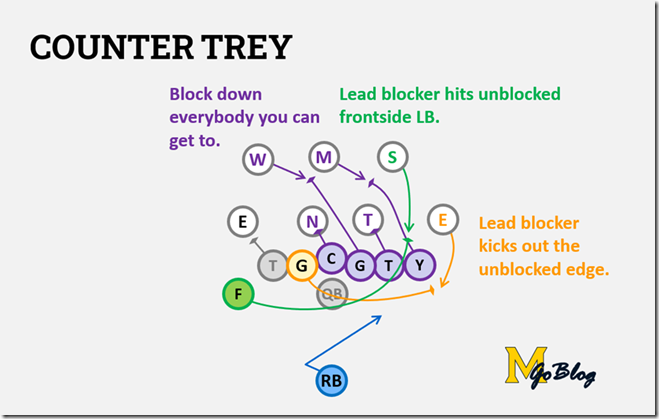
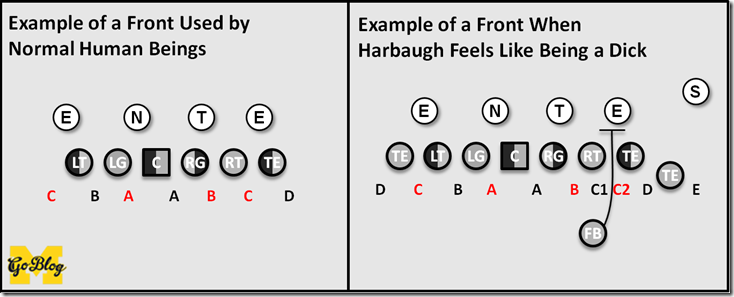



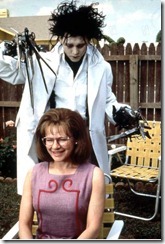
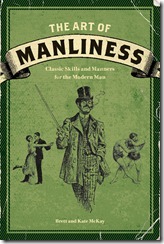

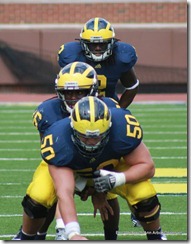
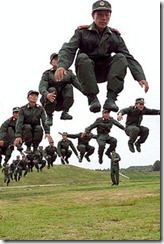
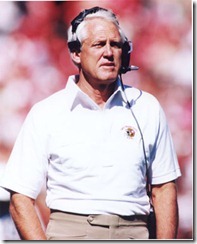
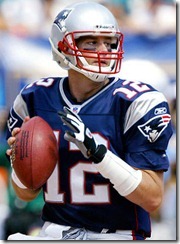
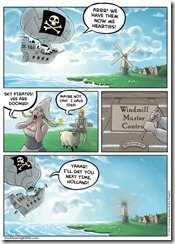
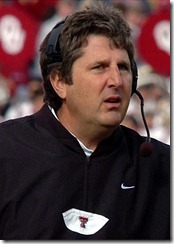
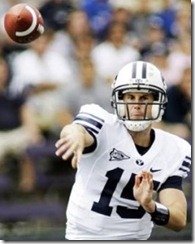


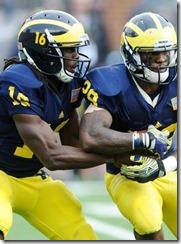
25